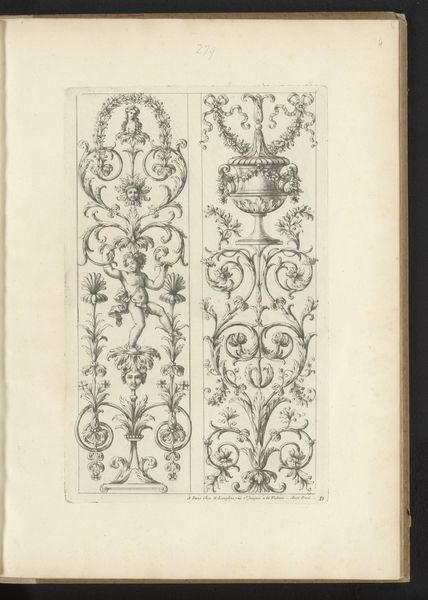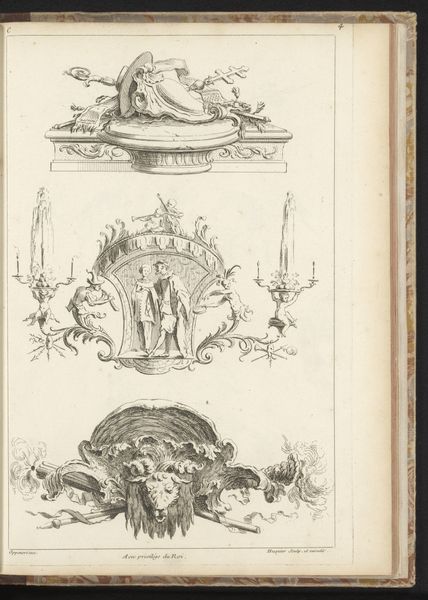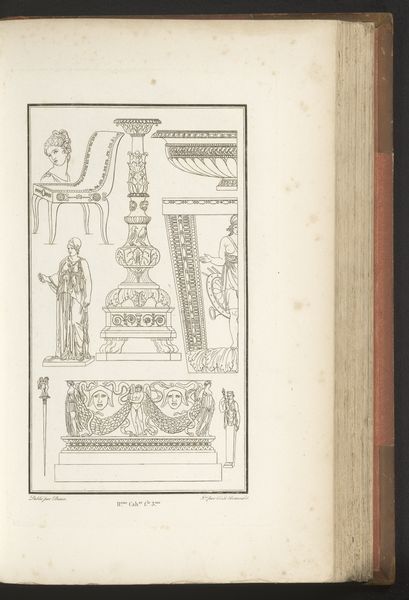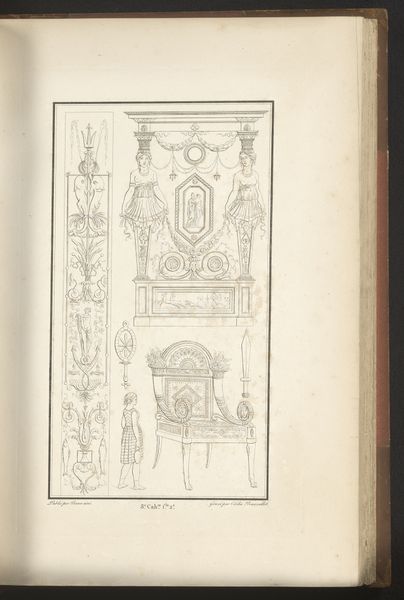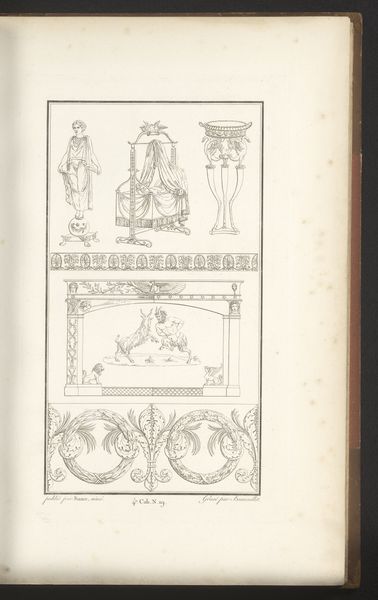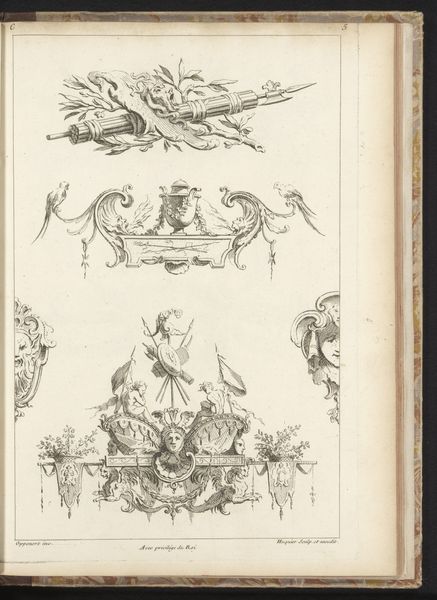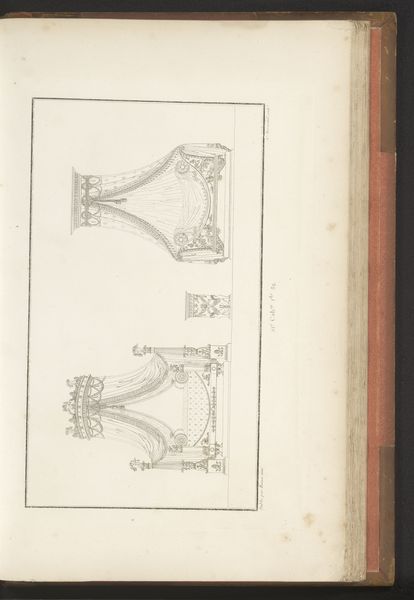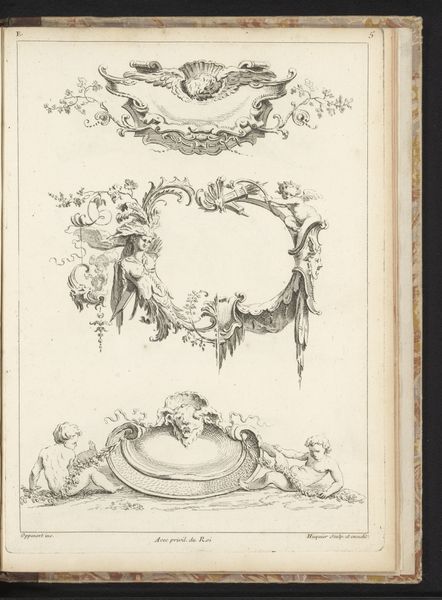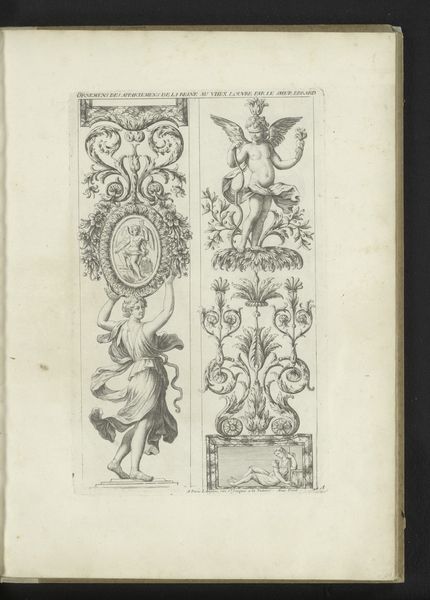
drawing, paper, ink, pen
#
drawing
#
allegory
#
paper
#
form
#
ink
#
pen
#
rococo
Dimensions: height 324 mm, width 242 mm
Copyright: Rijks Museum: Open Domain
Curator: Look at this intricate sheet of designs by Gabriel Huquier, dating roughly from 1725 to 1750. It’s titled "Drie ontwerpen voor muurornamenten," or "Three Designs for Wall Ornaments." Editor: It's quite striking! Immediately I’m drawn to the pen and ink work – such delicate lines creating this almost ethereal effect. And look at the level of detail crammed into each of the three panels. Curator: Indeed. Each panel showcases a unique concept for wall decoration, laden with Rococo sensibilities. We see allegorical figures interwoven with ornamentation, intended to impress. Remember, the Rococo style was meant to exhibit power and luxury. Editor: And these aren't just whimsical doodles; these were proposals! I imagine a craftsman studying these meticulously, then selecting his materials – plaster, maybe some gilding? The labor involved is palpable. Curator: Absolutely. Huquier, while primarily a printmaker and designer, was feeding the voracious appetite of the aristocracy for refined and elevated surroundings. The presence of winged putti is hard to ignore as a political move within religious circles as well. Editor: See how each design integrates classical motifs – figures with shields, drapery, symbolic objects – within an overarching asymmetrical and ornamental form? This fusion speaks to the material excess emblematic of the era. How much paint would've been needed? How many pigments would've had to be traded? Curator: The style definitely suited an age that believed beauty and art served political ends, enhancing social status. It's quite the embodiment of aristocratic self-presentation. These drawings showcase design and intent. Editor: Agreed. Looking closely, you can almost hear the hammer, the chisel... imagine all the man-hours condensed within such an ornate setting! The final object becomes an overt display of value, crafted by laborers largely rendered invisible. Curator: And these designs circulated, influencing aesthetics and decorative arts across Europe. The power of imagery in constructing cultural tastes! Editor: To look at these "Three Designs for Wall Ornaments" is to understand that beyond the surface splendor, labor and material form are always present. Curator: So next time you see such ornamentations, try to also think about its complex journey. Editor: Yes, look a little closer, and you’ll see beyond just "decoration".
Comments
No comments
Be the first to comment and join the conversation on the ultimate creative platform.




